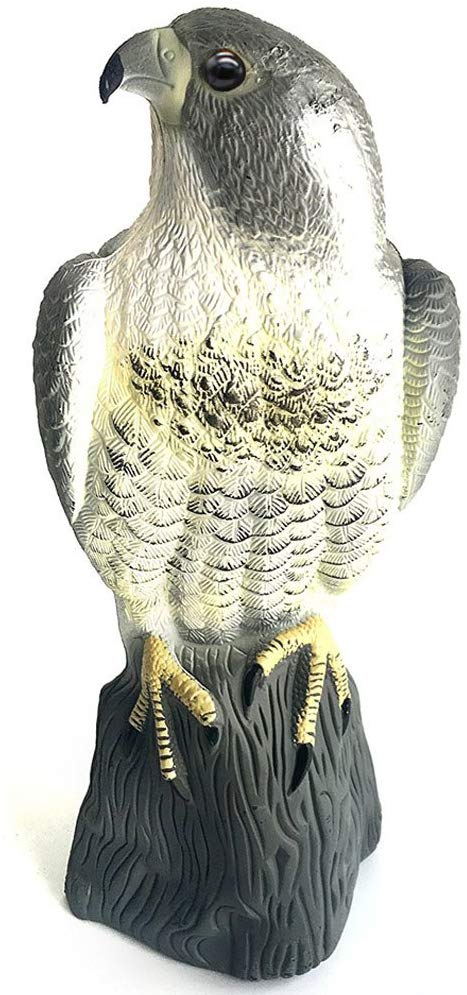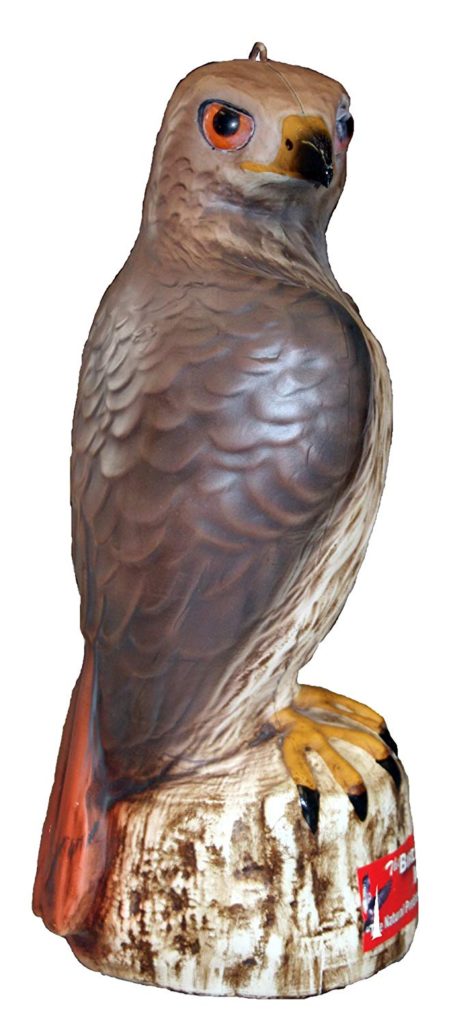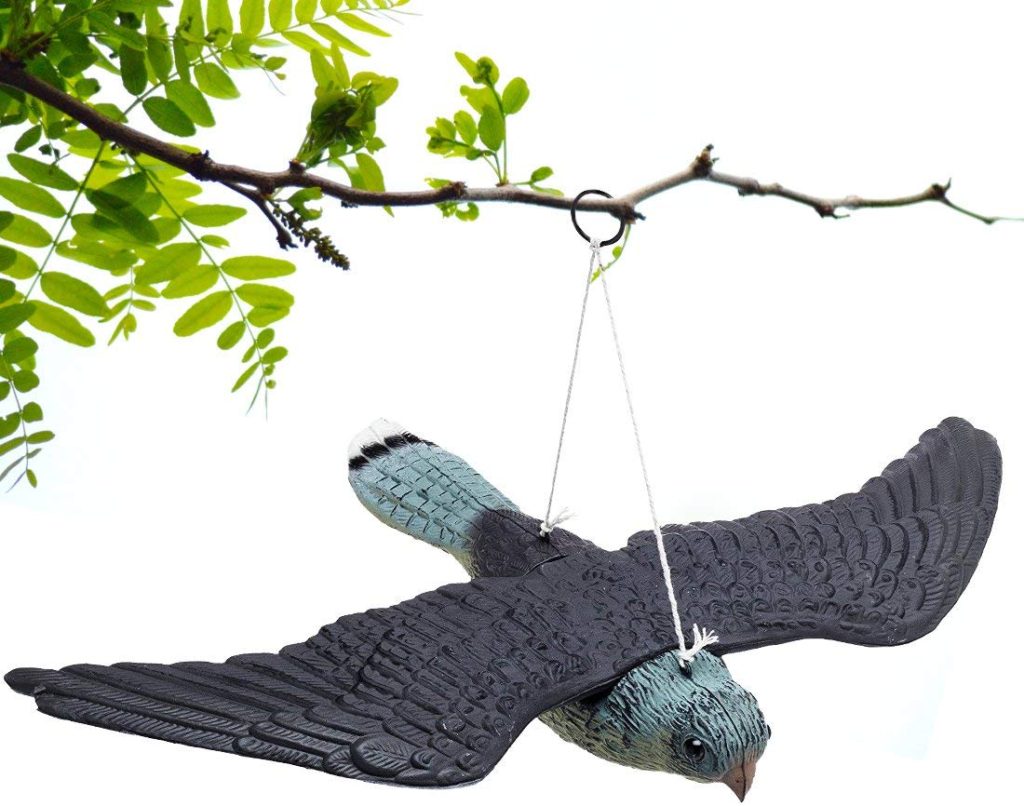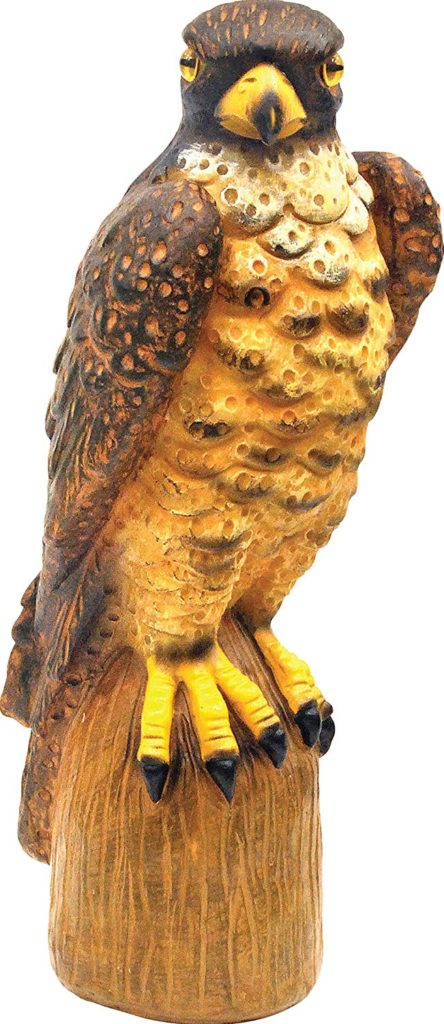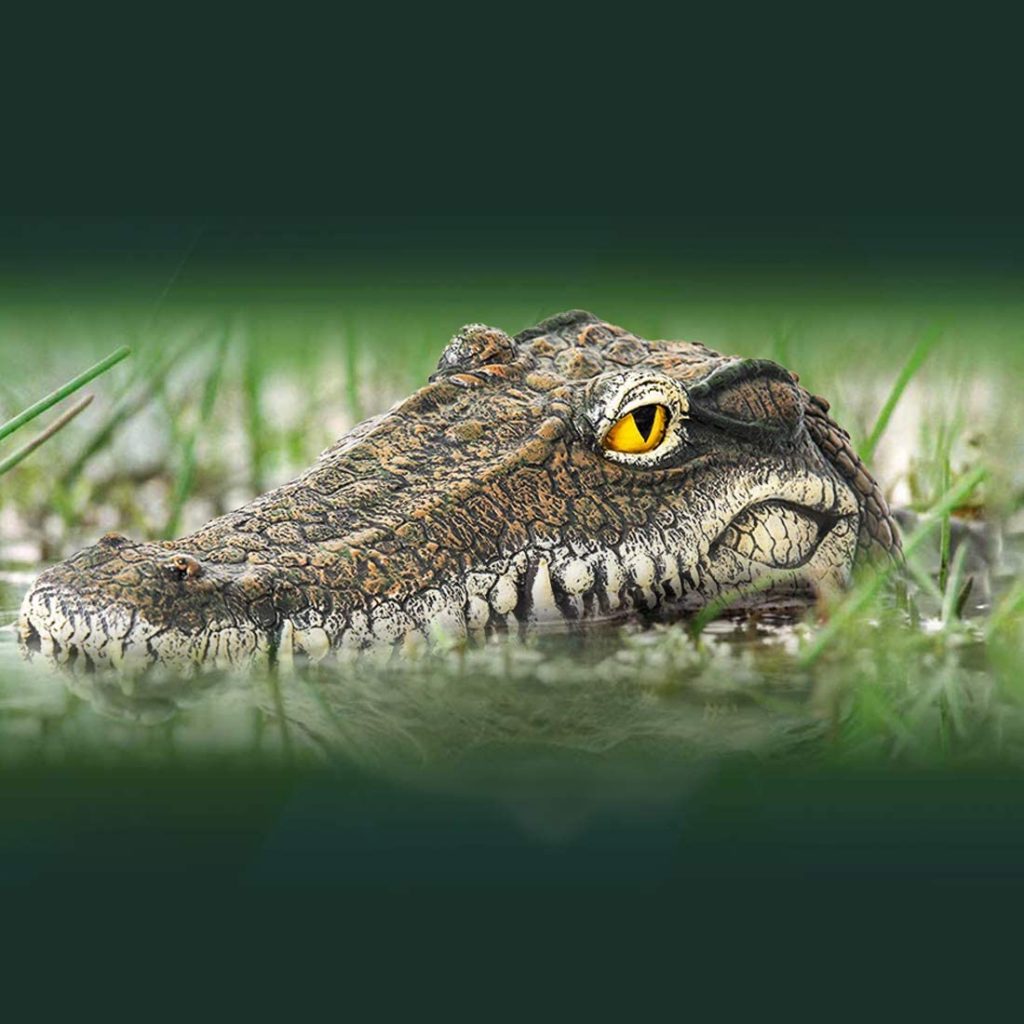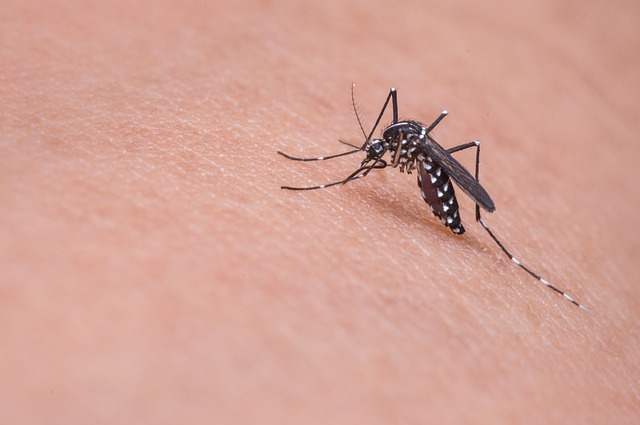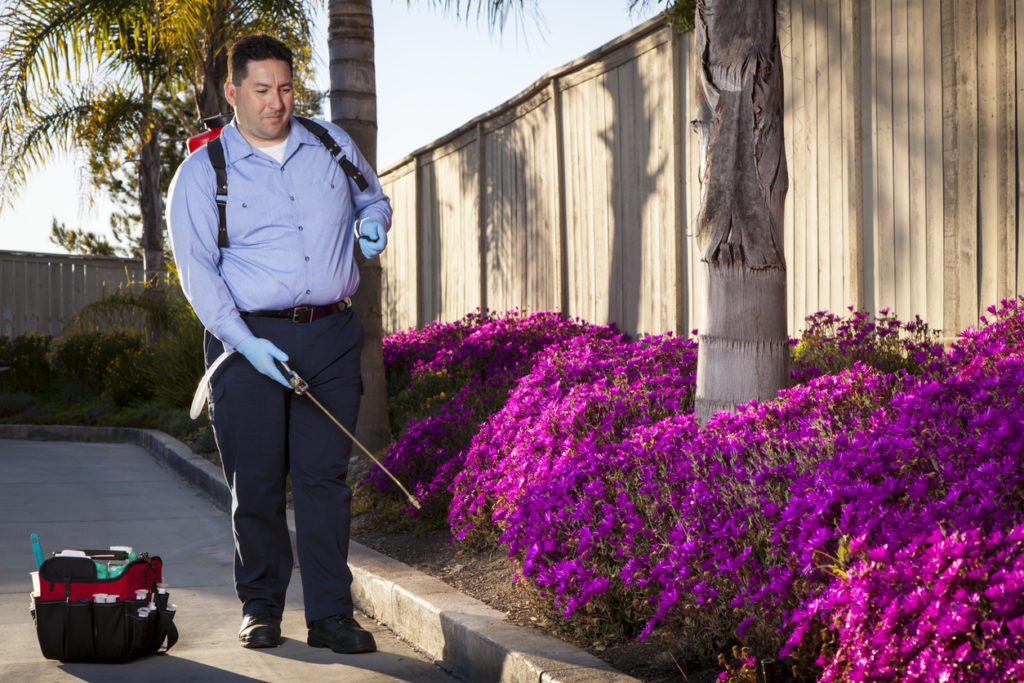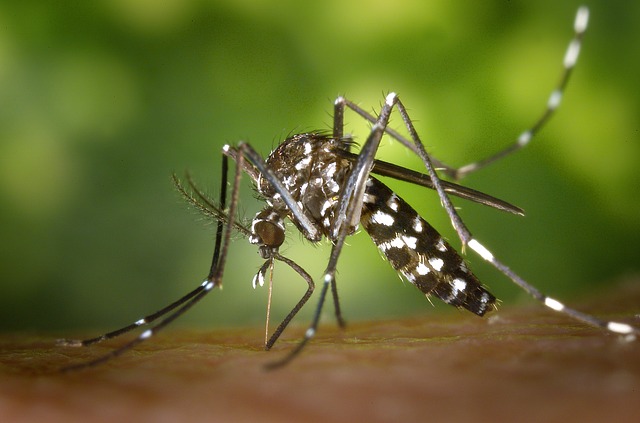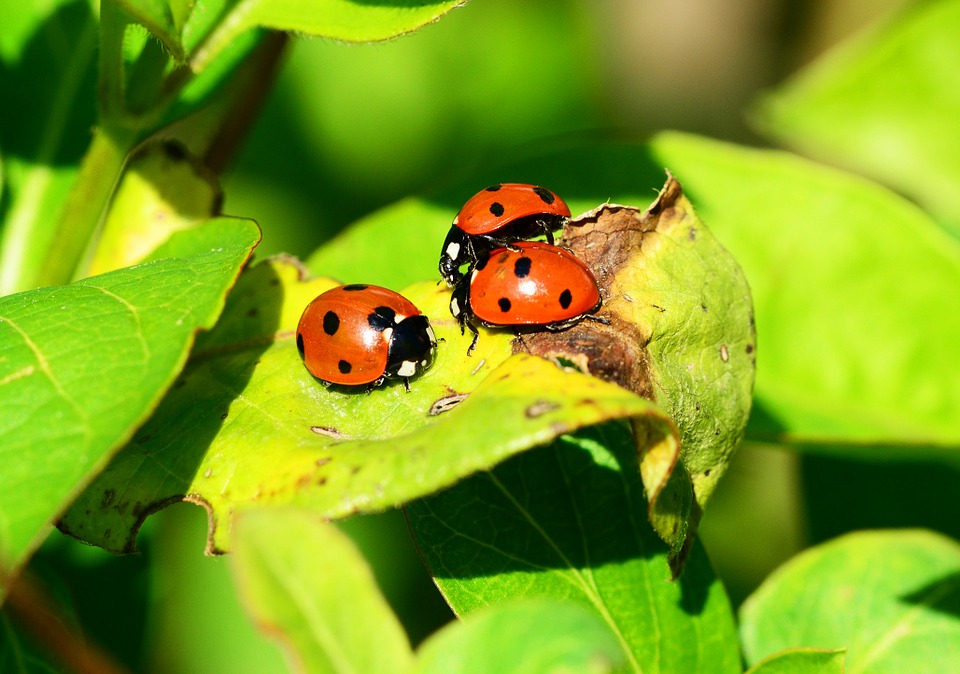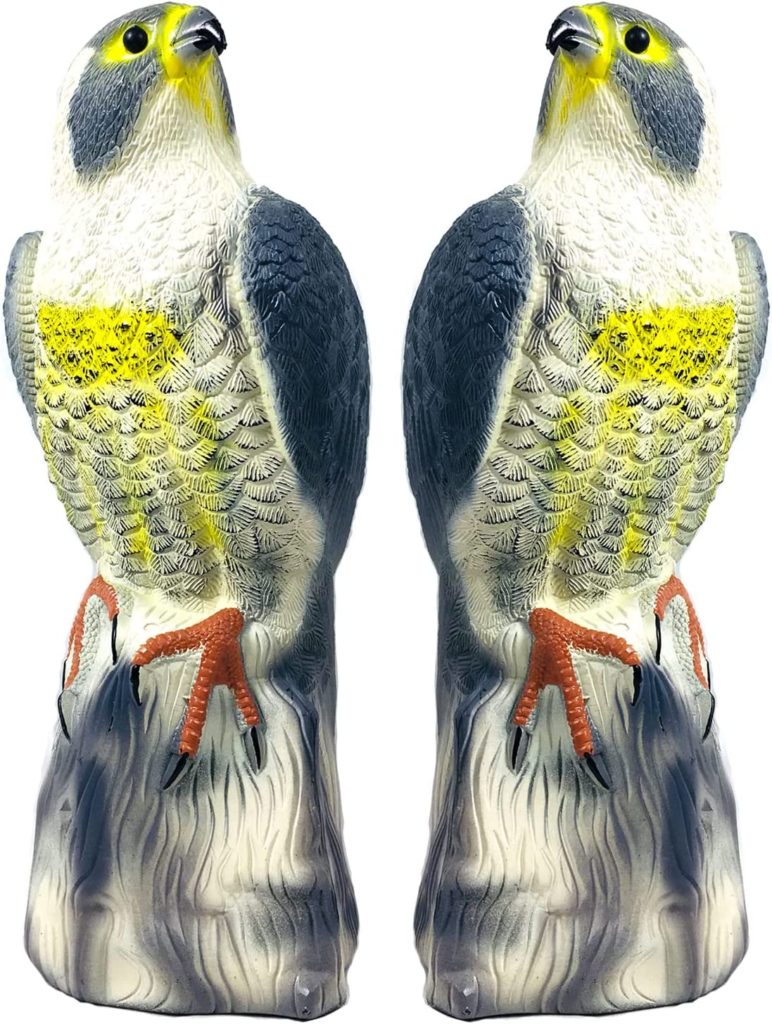
Pest birds can make a huge mess and cause a lot of expensive damage. To help keep birds and other pests away, a hawk decoy is an effective and safe solution. So here is your complete guide to them.
Why A Hawk Decoy?
Hawks are one of the most widespread birds of prey in North America. These fast-flying predators also hunt during the day. Therefore they are instantly recognized by a range of pests as a serious threat that needs to be avoided at all costs. This fear is naturally hard-wired in their brains. And that makes a fake hawk a perfect choice for deterring pests.
What Animals Do They Keep Away?
Hawks are predators and their diet includes a variety of birds, small mammals, and rodents along with other animals. For this reason, hawk decoys are used to deter:
Pest Birds
Hawks are naturally feared by most bird species. Therefore they can be used for just about any type of bird you’d like to keep away. They are generally used to deter pest birds that cause damage to a home, business, or structure. Pest birds may also nest in these spaces or create a mess when they poop.
Other birds may simply make too much noise, fly into windows, steal outdoor pet food, or harass outdoor pets (blue jays are especially well-known for this.) Many farm, orchard, and garden owners use a decoy to deter birds that steal and eat their fruits, vegetables, and crops. In terms of specific species, it’s very common to use a fake hawk to scare pigeons, swallows, starlings, sparrows, mocking birds, doves, and grackles.
They are also used for crows, magpies, blackbirds, and pesky woodpeckers that may cause damage to wood siding. Using a fake hawk to scare seagulls that poop on docked or moored boats can be very effective, or you just want to spook annoying songbirds like cardinals or your neighbor’s chickens to keep them out of your yard. It’s up to you what birds you consider to be pests.
Common Backyard Pests
Luckily in addition to birds, hawks eat many other pest species. Therefore you can use a fake hawk to scare squirrels, chipmunks, rabbits, groundhogs, gophers, and moles. Stray cats, snakes, prairie dogs, rats, and mice are also on the menu for hawks so they will be sure to stay out of your yard when they see a decoy as well.
Real Hawks
In certain areas, real hawks can be a threat to smaller pets. And placing a hawk decoy in your yard can help to protect chickens, cats, and small dogs from being taken by local hawks. Once a hawk sees the decoy, it may believe it’s in another hawk’s territory and hopefully keep flying to avoid a territorial confrontation.
Hawk Decoy Basics
A decoy is a visual deterrent. That means that once pests see them, they leave the area because they don’t want to be eaten. And unlike other pest control options such as trapping or baiting, using a fake hawk decoy is both inexpensive and totally safe for pets, children, and the pests themselves. An added advantage is that a decoy will always be working to keep pests away rain or shine.
Hawk decoys are made from a durable plastic material so that they can be used outdoors, year-round, and in all types of weather conditions. For maximum effectiveness, they are designed to look just like real hawks right down to their razor-sharp talons and hand-painted markings. Some decoys are even painted to look like specific hawk species.
For example, the well-known Bird B Gone Hawk is actually a red-tailed hawk decoy, as the red-tailed hawk is one of the most common of all hawk species. Other decoys may just be more generic hawks. Many decoys will also include reflective eyes which help convince pests that they are looking at a real live predator.
Hawk Decoy Poses
Decoys typically come in two different poses perched or flying. This is because when hawks hunt they will perch on an object that gives them a good view such as a branch, ledge, fence post, or telephone pole to help them spot their prey. They also find prey by flying and scanning for potential meals below. So these two poses instantly strike fear in pests
Perched hawk decoys normally have a base with a flat bottom that is designed to look like a natural piece of wood or stone and is hollow so that it can be placed on top of an object, mounted, or filled with sand to help keep it upright at all times. Flying hawk decoys will have a loop on the top so that they can be hung from a branch or other object which makes them look like they are flying.
Where And How To Use A Hawk Decoy
Using a decoy is simple. You will want to place, mount, or hang your hawk decoy in a location that is clearly visible to pests. If they can’t see it, they won’t know to stay away. It should also be near the area where you would like to keep the pests away from.
Common places where decoys are used include on or near: rooftops, eaves, overhangs, balconies, porches, docks, boats, decks, gazebos, pergolas, swimming pools, patios, gardens, yards, barns, fields, and orchards. When using a fake hawk to scare birds away that are pooping on vehicles they can be placed near driveways, carports, or garages. Some people even set a perched hawk decoy directly on top of parked cars or farm vehicles.
While it’s important for the decoy to be visible it’s just as important that you move it. That’s right, while pests are typically fooled by decoys, if a decoy is left in the same location for too long it will not be looked at as a living thing. So the very pests you may be trying to repel may end up perching, sitting, or pooping on it.
(This is the biggest mistake of decoy users, and the decoy of course usually takes the blame.) The more often you can move and shift the position of your hawk decoy the better. About every other day or so would be ideal. It only takes a moment and it’s definitely better than having to clean up poop, knockdown bird nests, or dealing with costly damage.
Extra Decoy Tips
Sand Alternatives
If you don’t have sand to fill the base of your decoy, don’t worry small pebbles and rice work too.
Multiple Threats
When pests are a big problem using multiple decoys can be even more efficient. You may want to use a couple of hawks or a few different types of birds of prey. For example, falcon, owl, and hawk decoys are often used together.
Inflatable snakes, coyotes, or alligator decoys are also options depending on what species you are trying to keep away. Other types of deterrents such as bird spikes or reflective scare rods can also be used in combination with decoys with excellent success.
Poles
An easy way to always keep your decoy highly visible and make it easy to move around is to mount it on a pole. The pole can be moved and inserted in the ground wherever you’d like. Doing this can be particularly helpful in backyards and open areas.
Hanging
Some perched decoys may come with an extra loop on the top of the bird’s head. This helpful feature can allow you to hang them from a wire, high test fishing line, rope, or parachute cord. And despite the fact that the bird is in a perched position, having a hawk decoy that moves whenever there is a breeze can really help to convince pests that it’s real.
A hawk decoy is a low-cost, safe, humane, and easy-to-use deterrent. When birds and other pests are an issue having your very own hawk that protects your property at all times is worth it.
Start Shopping for Hawk Decoys!
The Complete Alligator Decoy Guide
Buy on Amazon Trying to keep predators and pests out of your pond or pool can seem like an impossible task. It can be time-consuming, frustrating, and the damage they cause can be costly and messy. With an alligator decoy, you’ll be able to use their instincts against...
How To Keep Mosquitoes Away From Your Outdoor Living space
If you want to enjoy your outdoor living space during the warmer months without getting eaten alive by mosquitoes, then there is work to be done. Read on below to find out exactly how to keep these blood-sucking pests away from your backyard when the temperature heats...
Pest Control Planning-3 Methods That Are Safe For Your Home and Family
Just the thought of dealing with an infestation of insects or rodents can be enough to send homeowners into a panic. Yet at the same time, the idea of spraying dangerous chemicals on your property can also be unsettling. Fortunately, you don't have to compromise your...
4 Natural Ways to Pest-Proof Your Garden and Patio
Summer is fast approaching, which means it's time to plan out all the fun outdoor activities in your garden. Whether that's having a barbecue, starting a vegetable patch, or chilling in an outdoor pool, summer is the perfect time to take advantage of your garden and...
Green Tips for a Green Garden
Unwanted pests and unwanted weeds are always popping up in the garden. These can ruin flowers or other plants around the yard. Instead of using dangerous chemical pesticides as a means of pest control, there are organic alternatives that work just as well. Here are...
